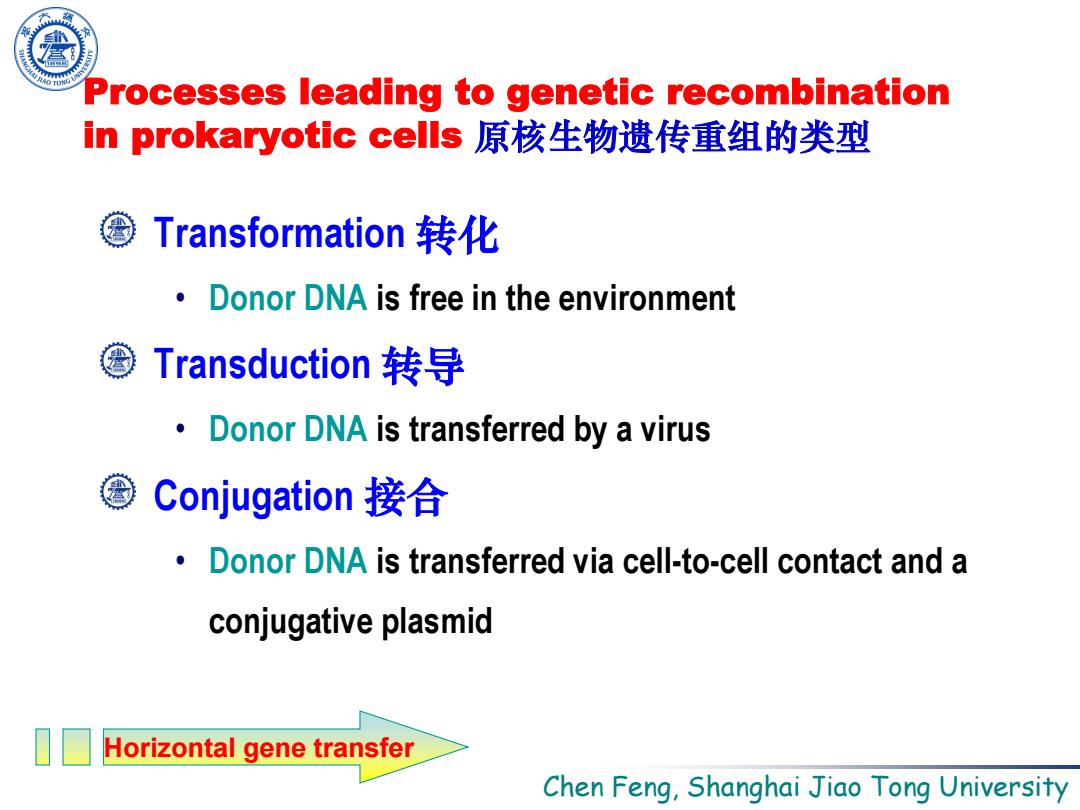
Processes leading to genetic recombination in prokaryotic cells原核生物遗传重组的类型 Transformation转化 Donor DNA is free in the environment Transduction转导 Donor DNA is transferred by a virus @Conjugation接合 Donor DNA is transferred via cell-to-cell contact and a conjugative plasmid Horizontal gene transfer Chen Feng,Shanghai Jiao Tong University
Chen Feng, Shanghai Jiao Tong University Processes leading to genetic recombination in prokaryotic cells 原核生物遗传重组的类型 Transformation 转化 • Donor DNA is free in the environment Transduction 转导 • Donor DNA is transferred by a virus Conjugation 接合 • Donor DNA is transferred via cell-to-cell contact and a conjugative plasmid Horizontal gene transfer
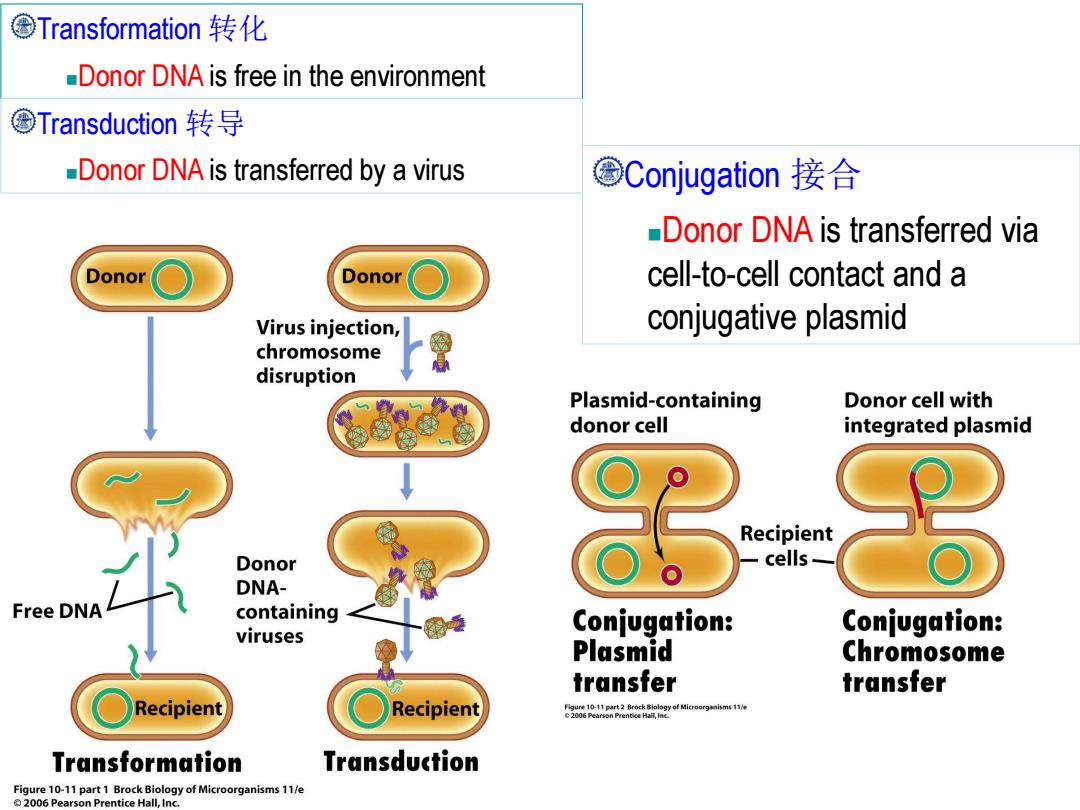
@Transformation转化 Donor DNA is free in the environment @Transduction转导 -Donor DNA is transferred by a virus ©Conjugation接合 Donor DNA is transferred via Donor Donor cell-to-cell contact and a Virus injection, conjugative plasmid chromosome disruption Plasmid-containing Donor cell with donor cell integrated plasmid Recipient Donor cells- DNA- Free DNA containing Conjugation: viruses Conjugation: Plasmid Chromosome transfer transfer Recipient Recipient Transformation Transduction Figure 10-11 part 1 Brock Biology of Microorganisms 11/e 2006 Pearson Prentice Hall,Inc
Transformation 转化 Donor DNA is free in the environment Transduction 转导 Donor DNA is transferred by a virus Conjugation 接合 Donor DNA is transferred via cell-to-cell contact and a conjugative plasmid
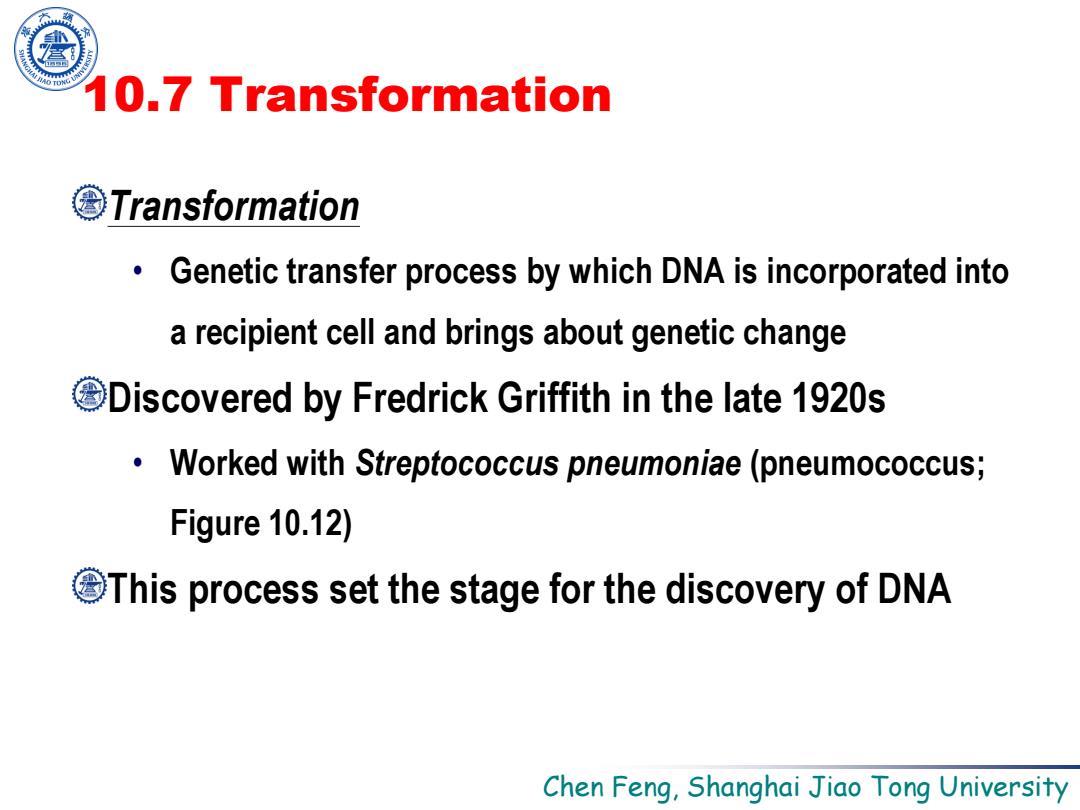
10.7 Transformation Transformation Genetic transfer process by which DNA is incorporated into a recipient cell and brings about genetic change Discovered by Fredrick Griffith in the late 1920s Worked with Streptococcus pneumoniae(pneumococcus; Figure 10.12) This process set the stage for the discovery of DNA Chen Feng,Shanghai Jiao Tong University
Chen Feng, Shanghai Jiao Tong University 10.7 Transformation Transformation • Genetic transfer process by which DNA is incorporated into a recipient cell and brings about genetic change Discovered by Fredrick Griffith in the late 1920s • Worked with Streptococcus pneumoniae (pneumococcus; Figure 10.12) This process set the stage for the discovery of DNA
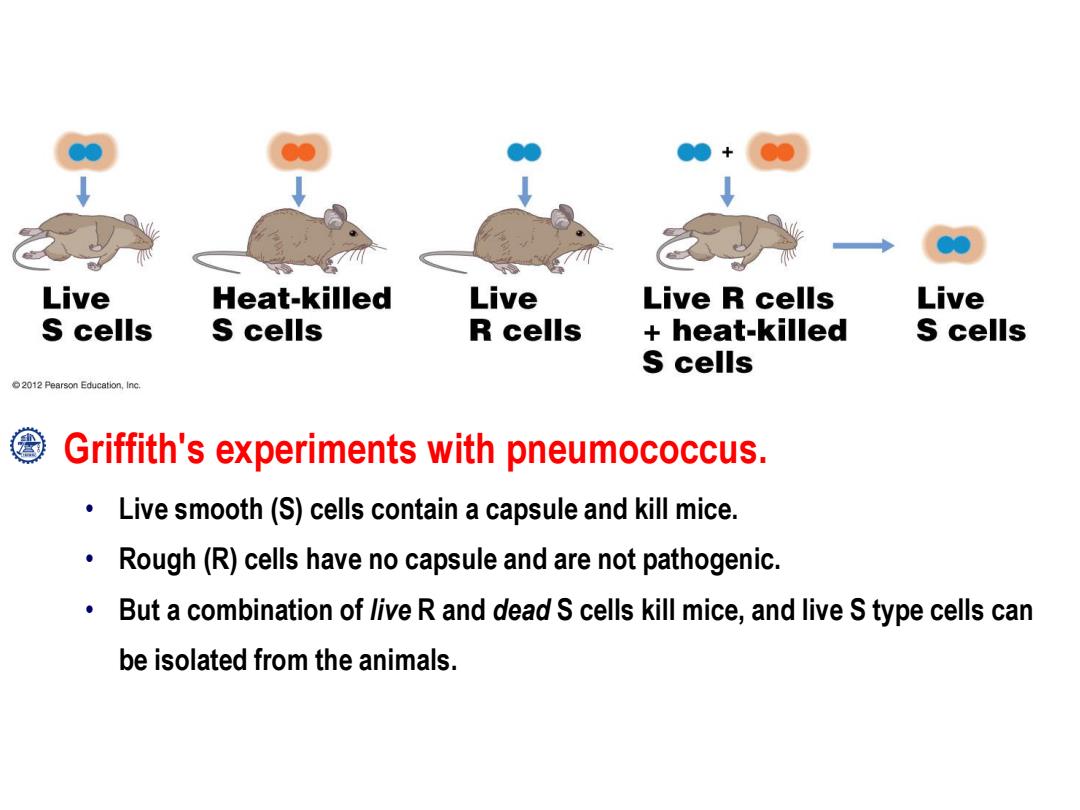
Live Heat-killed Live Live R cells Live S cells S cells R cells heat-killed S cells S cells 2012 Pearson Education,Inc Griffith's experiments with pneumococcus. Live smooth(S)cells contain a capsule and kill mice. Rough(R)cells have no capsule and are not pathogenic. But a combination of live R and dead S cells kill mice,and live S type cells can be isolated from the animals
Griffith's experiments with pneumococcus. • Live smooth (S) cells contain a capsule and kill mice. • Rough (R) cells have no capsule and are not pathogenic. • But a combination of live R and dead S cells kill mice, and live S type cells can be isolated from the animals
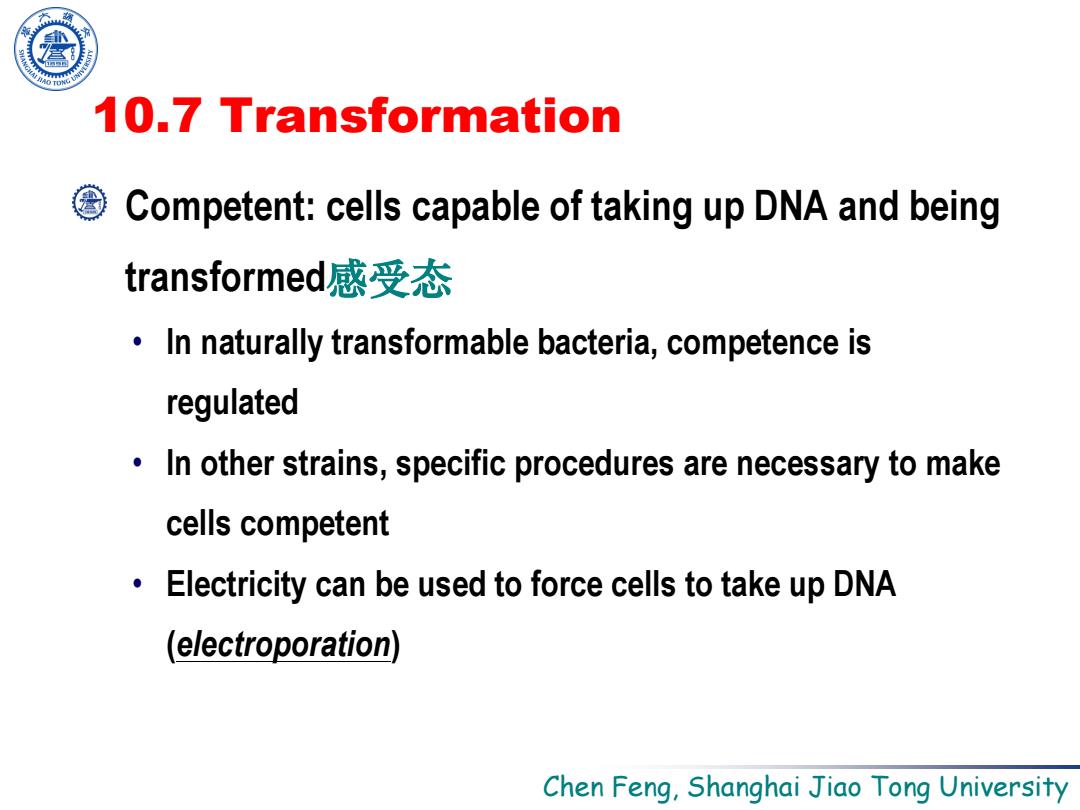
10.7 Transformation Competent:cells capable of taking up DNA and being transformed感受态 In naturally transformable bacteria,competence is regulated In other strains,specific procedures are necessary to make cells competent Electricity can be used to force cells to take up dNA (electroporation) Chen Feng,Shanghai Jiao Tong University
Chen Feng, Shanghai Jiao Tong University 10.7 Transformation Competent: cells capable of taking up DNA and being transformed感受态 • In naturally transformable bacteria, competence is regulated • In other strains, specific procedures are necessary to make cells competent • Electricity can be used to force cells to take up DNA (electroporation)